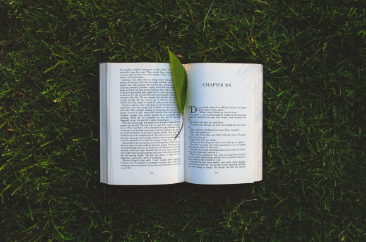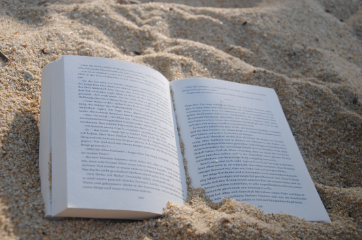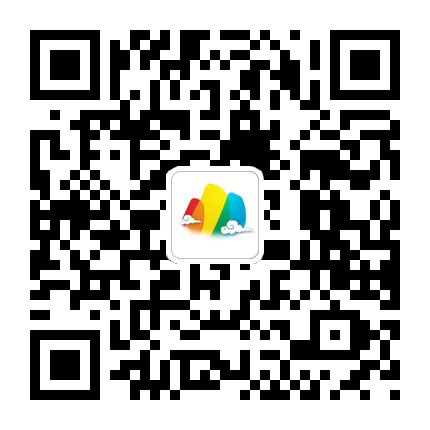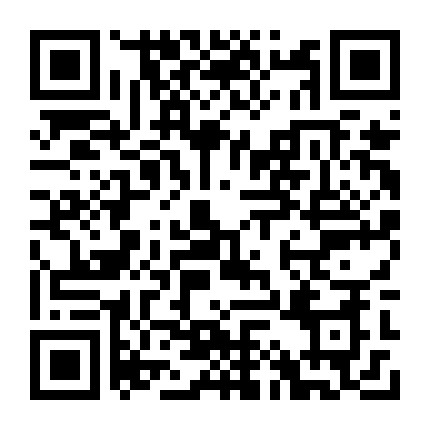小學(xué)英語there be句型
- 2018-11-30 17:08:00
- 張秀宇 原創(chuàng)
- 9559
{ There be句型 }
There be 句型的用法:表示某個地方存在某物或某人,Be動詞的單復(fù)數(shù)必須依主語的變化而變化。
(單數(shù)is 復(fù)數(shù)are )
eg:There is a table in the room. 房間里有一張桌子。
There are some birds on the tree.樹上有很多鳥。
一、 There be 句型的結(jié)構(gòu):
1.常見句型結(jié)構(gòu)
(一)There is+單數(shù)可數(shù)+地點狀語
eg:There is a ruler on the desk. 書桌上有一把尺。
(二)There are+復(fù)數(shù)主語+地點狀語
eg:There are four apples on the tree. 樹上有四個蘋果。
There are some flowers in the park. 公園里有許多花。
(三)there is + 不可數(shù)名詞 +地點狀語 (即使有some 也是 單數(shù))
eg:There is some water in the bottle. 瓶子里有一些水。 (水是不可數(shù)名詞)
2. There be選擇就近原則:
There be句型的就近原則是There be句型中語法項目的重點考點。There be句型中be動詞的單復(fù)數(shù)
形式由最挨近的一項的單復(fù)數(shù)決定。
如:There is a pen, two books and many pencils on the desk.
(在本句中盡管有鋼筆、書和鉛筆,但是由于離be動詞最近的一項是單數(shù)a pen,因此,be動詞用單數(shù)is。)
二、There be 句型的疑問句及回答
(一)There be 句型的疑問
1. 在“There is/are...”的疑問句中,要把Be動詞放在there之前,并將句號變問號。難點:句中出現(xiàn)的some要改成any。
2. 肯定回答為:Yes, there is/are.
3. 否定回答為: No, there isn’t/aren’t.
eg: 可數(shù)名詞單數(shù)1. 肯定句There is an apple on the tree.
疑問句 Is there an apple on the tree?
肯定回答: Yes, there is. 否定回答: No, there isn’t.
可數(shù)名詞復(fù)數(shù)2. 肯定句There are five pens on the desk.
疑問句Are there five pens on the desk?
肯定回答: Yes, there are. 否定回答 No, there aren’t.
不可數(shù)名詞的時候 3.肯定句 There is some water in the cup. (水是不可數(shù)名詞)
否定句 Is there any water in the cup?
肯定回答: Yes, there is. 否定回答: No, there isn’t.
(二)There be 句型的特殊疑問句:
There be句型的特殊疑問句形式有以下三種變化:
① 對主語提問:當(dāng)主語是人時,用\"Who\'s+介詞短語?\";
當(dāng)主語是物時,用\"What\'s + 介詞短語?\"。
(注意:無論原句的主語是單數(shù)還是復(fù)數(shù),對之提問時一般都用be的單數(shù)形式(回答時卻要根據(jù)實際
情況來決定)。)
② 對地點狀語提問:提問地點用"Where is / are+主語?\"
③對數(shù)量提問:一般有兩種句型結(jié)構(gòu):
How many+復(fù)數(shù)名詞+are there+介詞短語?
How much+不可數(shù)名詞+is there+介詞短語?
How much+不可數(shù)名詞+is there+介詞短語?
How much+不可數(shù)名詞+is there+介詞短語?
eg:How many people are there in the picture?
How much water is there in the bottle ?
三、There be 句型的否定形式
There be 句型的否定: 否定形式只要在be動詞后面加not即可,is not =isn’t are not= aren’t
但要注意的是句中如果出現(xiàn)some則改成any.
1.There is a knife in the kitchen.
——否定:There is not a knife in the kitchen.
2.There are five apples on the tree.
—— 否定:There are not five apples on the tree.
3.There is some water in the bottle.
——否定:There is not any water in the bottle.
4.There are some birds singing in the tree.
——否定:There are not any birds singing in the tree.
專題練習(xí)及答案
一、選擇題
1、There a meeting tonight.
A will be B had be C is going be D was
2、There a knock at the door just now .
A will be B has been C were D was
3、There a pen and two books on the desk now.
A are B be C is D was
4、There is _____ on the floor.
A.cat B.water C.boxes D.football
5、There are _____ on the floor.
A.cat B.water C.boxes D.football
二、句型轉(zhuǎn)換:
1、(將句子轉(zhuǎn)換成否定句)There is a bike behind the tree.
2、(將句子轉(zhuǎn)換成否定句)There are some books on the desk .
3、(將句子轉(zhuǎn)換成一般疑問句)There is some water on Mars.
三、句子畫線部分提問
1、There are many things over there.
2、There is a little girl in the room.
3、There are four children on the playground.
4、There are three women in the picture .
5、There is some water in the bottle .
參考答案:
一、選擇題
1.首先觀察題目本身的提示tonight,判斷該題的時態(tài)是將來時,首先排除選項A和D。C選項的結(jié)構(gòu)不正確,故選A。
2、首先觀察題目本身的提示just now,判斷該題的時態(tài)是一般過去時,首先排除選項A和B。C選項是復(fù)數(shù),不符和題意,故選D。
3、首先觀察題目本身的提示now,判斷該題的時態(tài)是一般現(xiàn)在時,首先排除選項D。選項B為原形不正確,排除。雖然原句中的主語是a pen and two books,但是根據(jù)就近原則,離there be 最近的是a pen,選項A為復(fù)數(shù)形式,排除。故選C。
4、 由is可知主語應(yīng)是可數(shù)名詞單數(shù)或不可數(shù)名詞,而A、D項中都缺少冠詞a,故選B,
5、由are可知主語應(yīng)是可數(shù)名詞復(fù)數(shù),而A,D選項為可數(shù)名詞單數(shù)。B選項為不可數(shù)名詞,故選C。
二、句型轉(zhuǎn)換:
1、There isn't a bike behind the tree.
2、There aren't any bikes behind the tree.
3、Is there any water on Mars?
三、就句子畫線部分提問
1、What's over there?
2、 Who is in the room?
3、Where are the four children?
4、How many women are there in the picture?
5、How much water is there in the bottle ?

關(guān)注智慧山微信公眾號(zhihuishan2013)后,在公眾號里回復(fù)以下關(guān)鍵字,即可得到相應(yīng)資源!
公開課、作文、復(fù)習(xí)、試卷、知識點、活動、拼音、字母、鐘表、看圖寫話、故事、雙語故事、成語、常識、APP、語文、數(shù)學(xué)、英語、百家姓、三字經(jīng)、唐詩三百首、自助查詢、超級口算
- 兒童故事
- 教育資源
- 小學(xué)語文
- 小學(xué)英語
- 小學(xué)數(shù)學(xué)
- 資源下載
- 專家講座
- 智慧山微課
- 少兒英語
- 專項復(fù)習(xí)
- 各科教材
- 課外讀物
- 育兒博客
- 書籍推薦
- 胎教音樂
- 經(jīng)典兒歌
- Scratch編程
- 一年級新生
- 飲食健康
- 學(xué)齡前
- 兒童電影
- 成長故事
- 學(xué)習(xí)寶典
- 幼小銜接
- 古詩文
- 影視動畫
- 科學(xué)小實驗
- 精選課程
- 書法比賽專用
- 首頁課程介紹
- 小學(xué)指南
- 智慧山活動
- 說明
- 家庭教育
- 曬飯—一早一晚
- 兒童編程
- 認知階段Scratch圖形化編程
- 理解階段Python人工智能語言
- 運用階段C++及信息學(xué)競賽
- code.org作業(yè)答案
- code.org作業(yè)視頻講解
- 編程網(wǎng)站
- python入門課作業(yè)答案
- python1(上)作業(yè)答案
- python1(下)作業(yè)答案
- Scratch入門課作業(yè)答案
- 作業(yè)解析
- Scratch相關(guān)資源
- python2(上)作業(yè)答案
- Scratch Level 1作業(yè)答案
- python2(下)作業(yè)答案
- Python3(上)作業(yè)答案
- Scratch Level 2作業(yè)答案
- 國家政策及比賽
- 2022年P(guān)ython寒假課
- 2022年Scratch寒假課
- 編程網(wǎng)站
- 智慧山圖書館
- 小升初
- 英語學(xué)習(xí)
- 智慧家庭教育






